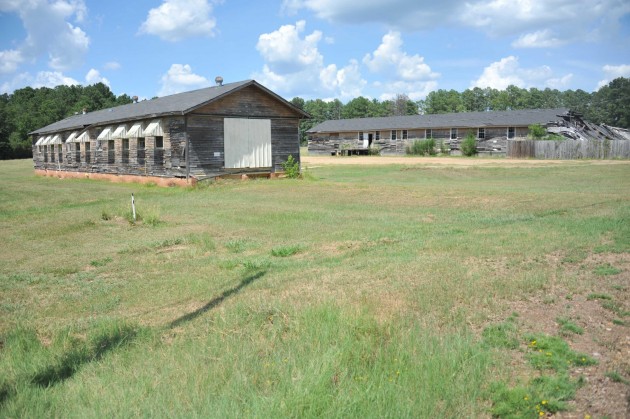
The Grambling State University West Campus Annex had strong historic ties to the university and community even before it was given to GSU on Aug. 1.
West Campus Annex was the site of a prisoner-of-war camp in World War II, the land for which came from local black farmers. Those same men were members of the farmers and preachers groups that wrote to Booker T. Washington to send someone to found a school here.
It was from their request that Charles P. Adams was sent and in 1901 the Colored Industrial and Agricultural School, later to become Grambling State University, opened.
“It is almost as if control of that property has come full circle,” said Dr. Reginald Owens, chair of the Department of Journalism at Louisiana Tech who has extensively researched and written about Lincoln Parish history.
Camp Ruston was one of the largest POW camps in the United States during that time with over 750 acres costing about $24,000.
GSU officials knew that there were two historic buildings on the premises when they received the land.
“The first time I saw it I was amazed,” said Will Sutton, director of public relations and communications at GSU. “I couldn’t believe my eyes. There was a historic World War II prisoner camp right here in Ruston.
“Just think that there were all kinds of prisoners of war just down the street from Grambling State’s main campus,” Sutton said.
According to official archives housed in the Louisiana Tech library, in 1942 the T.L. Company of Ruston was awarded the Camp Ruston building contract at a cost of $2.5 million. Construction started in September and was completed in time for the camp’s dedication on Dec. 25.
“What is missing in the history of the POW camp is that the land was originally owned by black people,” Owens said, “and that the camp was built in what was literally a rural black community.”
Owens’ uncle Gene Younger was one of the black farmers who sold land so that Camp Ruston could be built. The largest landowner to give up land was the Rev. Robert Youngblood and his wife Polly, who sold 206 acres.
The Rev. Youngblood was a member of the Liberty Hill Baptist Association and the North Louisiana Colored Agriculture Relief Association, the organizations that wrote to Booker T. Washington.
POW camps in the United States came about when England experienced a critical shortage of prison space. Reluctantly, the U.S. agreed to house the prisoners.
This resulted in POW camps located in 46 of the 48 states in America, which housed a total of 375,000 German POWs, which were then called PWs.
Owens said his mother told him stories of the prisoners escaping and going to people’s homes, not causing harm but just mingling.
“They came and hung out in the community,” Owens said. “That was what was so unique about the situation. It was a very amicable relationship.”
Camp Ruston, which was later home to the Ruston State School and/or Ruston Developmental Center, is about 2.3 miles west of GSU’s main campus.
In the early 1990s, Tech and Ruston Developmental Center began the Camp Ruston Documentation Project to collect historical materials; in the hopes of preserving the history of the camp. This brought a lot of attention to the camp and resulted in a series of activities and events.
“Now that the land is owned by the University there are no definite plans or talk about destroying what is left of the Camp. The Diverse University Committee is considering some options and working up a multiplicity of ideas and plans for some of the preeminent academic and community opportunities for the land.” Sutton said.
The camp appeared on local television stations, exhibits and slide presentations were created, and provision of material for a taped segment for the LPB-TV was programmed. On December 13, 1991 one of the two remaining buildings from the camp was listed on the National Register of Historic Places and still stands after over 50 years.
